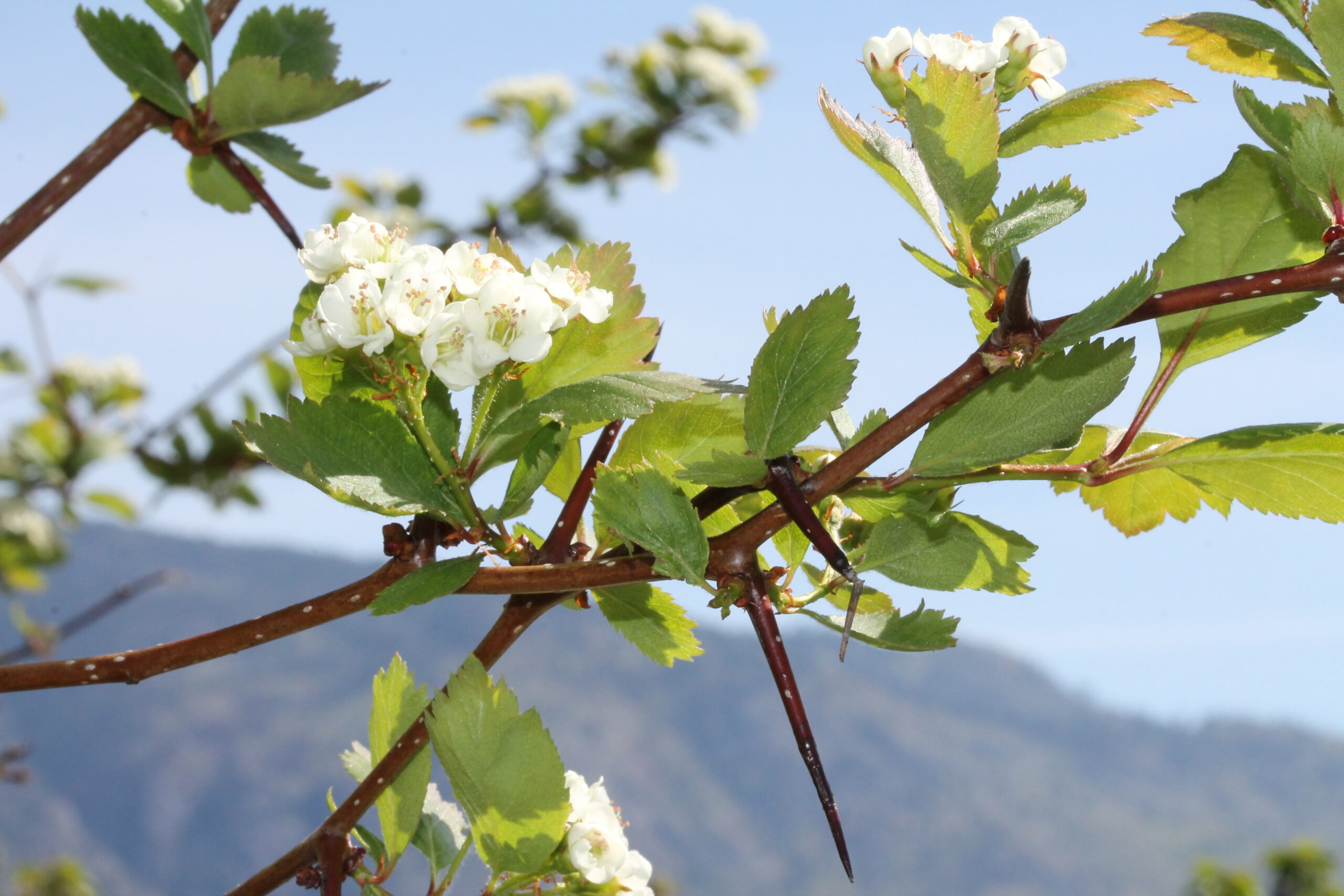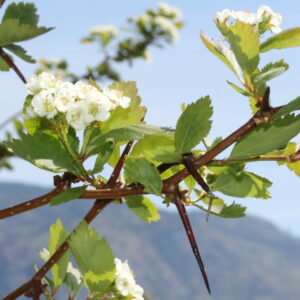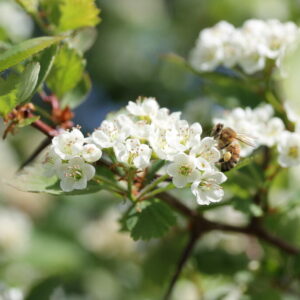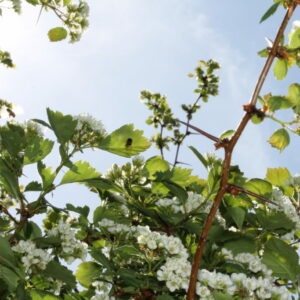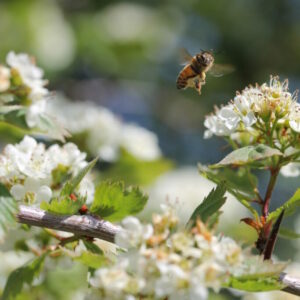Family: Rosaceae/ Rose
Ecology/ Botany:
This shrub is common at low to mid-elevation along rivers, streams, marshy areas, and gullies. It prefers Interior Douglas Fir and Cedar Hemlock forest zones.
Medicinal/Traditional/Other Uses:
It has medicinal properties for the heart and circulatory system. Most commonly, the dark red clusters of seedy berries are used for heart and blood vessel conditions and sometimes for digestive issues. The leaves and flowers can also be used for the cardiovascular system, and as a relaxant. The berries were an important food for Indigenous North Americans. They have used the fruit and bark medicinally, and the strong wood with sharp thorns for body piercing, and to make tools, weapons, and fishhooks. The Nlaka’pamux (Thomson) people have used the fruit and bark as medicine for diarrhea and other digestive issues.
References/Other useful Links:
Parish, Coupe, Lloyd. 1996. Plants of Southern Interior British Columbia. B. C. Ministry of Forests and Lone Pine Publishing.
n.d. “Community Herbalist Program/ My Account.” Pacific Rim College Online. Accessed 12 2020.
https://pacificrimcollege.online/program/community-herbalist/
Neskonlith Education Center, Secwepemc Nation. 2019. Secwepemc Plant Knowledge Cards. Shuswap and North Okanagan: Neskonlith Education Center.
https://bcparksfoundation.ca/projects/discover-parks/secwepemc-plant-knowledge-cards/black-hawthorn/

